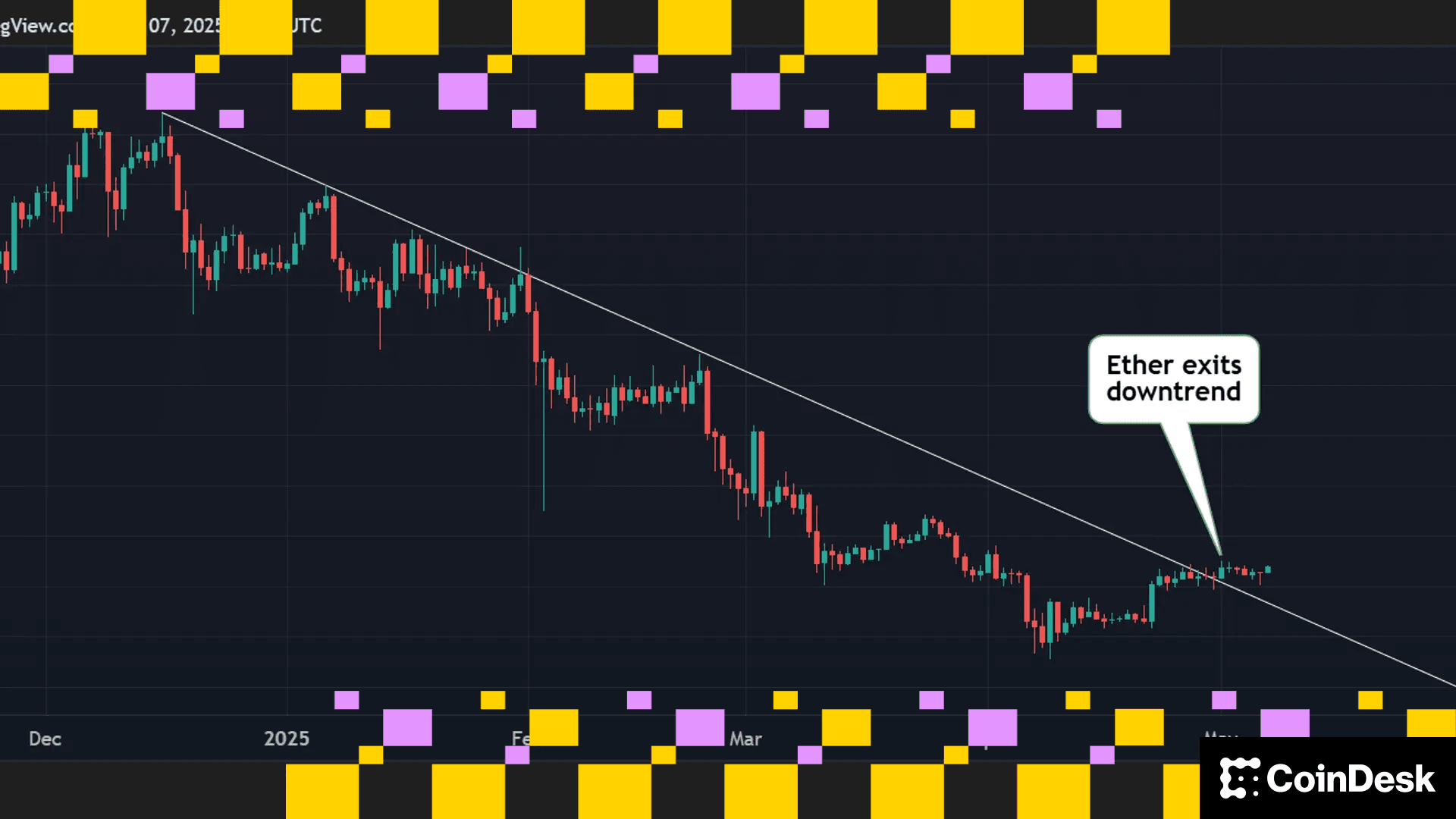What Fat Tails and Revolutionary Ages Mean for Digital Assets
There are over 20,000 cryptocurrencies in existence. But if history is our guide, only a handful of them will drive the majority of wealth creation.

Stock market returns are overwhelmingly driven by a small group of winners. We expect the same trend in digital assets.
Between 1926 and 2016, just five out of 25,300 publicly traded companies drove 10% of the entire U.S. stock market’s $35 trillion of total wealth creation: Exxon Mobil (XOM), General Electric (GE), International Business Machines (IBM), Microsoft (MSFT) and Apple (AAPL). Ninety stocks accounted for more than half. Just shy of 1,100 generated the entire gain; the rest collectively returned less than U.S. Treasury bills.
Why so lopsided?
You’re reading Crypto Long & Short, our weekly newsletter featuring insights, news and analysis for the professional investor. Sign up here to get it in your inbox every Wednesday.
Stock returns don’t fall along a normal distribution. They skew positively, with a few remarkable ones creating a “fat” right tail. Long-term investors who didn’t own those stocks risked missing out on the market’s average return.
We anticipate a fat right tail in digital asset returns, too.
But why? What causes skewness in the first place?
We think a fundamental driver is technological revolutions. In her book “Technological Revolutions and Financial Capital,” Carlota Perez defines these as “a powerful and highly visible cluster of new and dynamic technologies, products and industries capable of bringing about an upheaval in the whole fabric of the economy.”
Perez identifies five technological revolutions since the late 18th century:

Each period begins with disruptive technological innovations that attract talent and risk capital, spawning an explosion of startups. Financial bubbles, corruption and collapse generally follow, eventually bringing regulation, management disciplines and productivity – a golden period of growth and profits. Since the Age of Steel, the golden periods have been dominated by large corporations. The longer the golden period, the greater the opportunity for winners to compound wealth.
Each of the five firms that drove 10% of all wealth creation since 1926 were market leaders of a recent Revolutionary Age:

Notably, each was founded at the beginning of an Age, maximizing the opportunity to compound returns for many years. But just being there wasn’t enough. These winners imagined a future others could not.
We are about 50 years past the dawn of the Information Age. It’s likely a new Age is forming. Will it be the Age of Digital Assets? In our view, digital assets alone are not enough to ignite a revolution. They are, however, a powerful innovation that, together with others such as artificial intelligence, robotics and genomics, have the potential to form a new Age.
If we’re right, the winners of this Age may be among today’s newcomers. Long-term investors would do well to make sure their portfolios include the potential wealth creators that will disproportionately drive market returns in the coming decades. We think digital assets are strong candidates.
Note: The views expressed in this column are those of the author and do not necessarily reflect those of CoinDesk, Inc. or its owners and affiliates.
More For You
Exchange Review - March 2025

CoinDesk Data's monthly Exchange Review captures the key developments within the cryptocurrency exchange market. The report includes analyses that relate to exchange volumes, crypto derivatives trading, market segmentation by fees, fiat trading, and more.
What to know:
Trading activity softened in March as market uncertainty grew amid escalating tariff tensions between the U.S. and global trading partners. Centralized exchanges recorded their lowest combined trading volume since October, declining 6.24% to $6.79tn. This marked the third consecutive monthly decline across both market segments, with spot trading volume falling 14.1% to $1.98tn and derivatives trading slipping 2.56% to $4.81tn.
- Trading Volumes Decline for Third Consecutive Month: Combined spot and derivatives trading volume on centralized exchanges fell by 6.24% to $6.79tn in March 2025, reaching the lowest level since October. Both spot and derivatives markets recorded their third consecutive monthly decline, falling 14.1% and 2.56% to $1.98tn and $4.81tn respectively.
- Institutional Crypto Trading Volume on CME Falls 23.5%: In March, total derivatives trading volume on the CME exchange fell by 23.5% to $175bn, the lowest monthly volume since October 2024. CME's market share among derivatives exchanges dropped from 4.63% to 3.64%, suggesting declining institutional interest amid current macroeconomic conditions.
- Bybit Spot Market Share Slides in March: Spot trading volume on Bybit fell by 52.1% to $81.1bn in March, coinciding with decreased trading activity following the hack of the exchange's cold wallets in February. Bybit's spot market share dropped from 7.35% to 4.10%, its lowest since July 2023.
More For You











